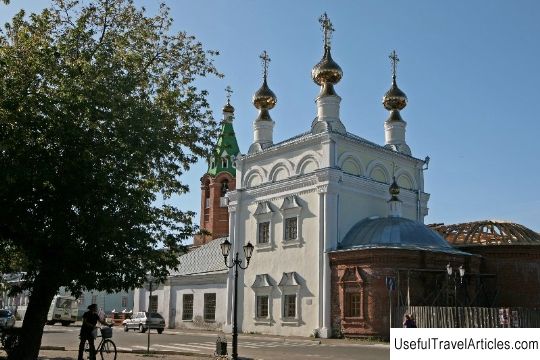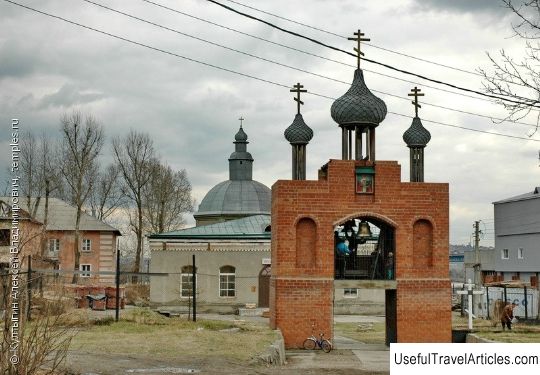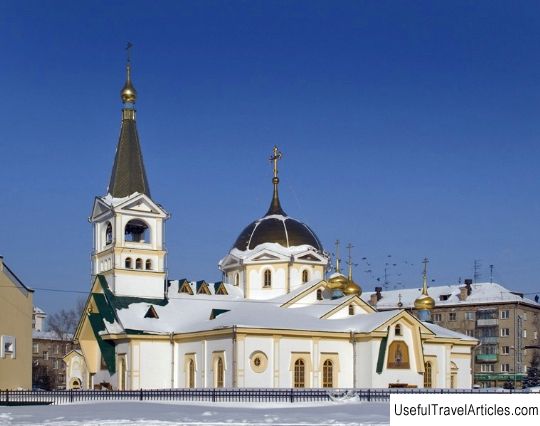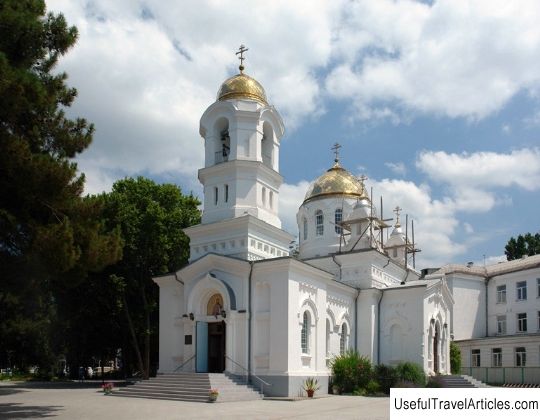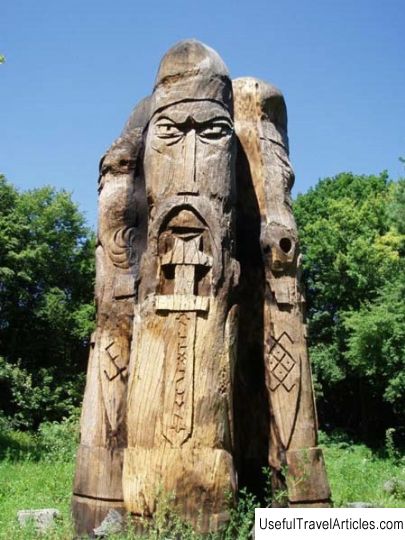Church of the Ascension of the Lord description and photos - Russia - Golden Ring: Vladimir
Rating: 7,7/10 (1093 votes) 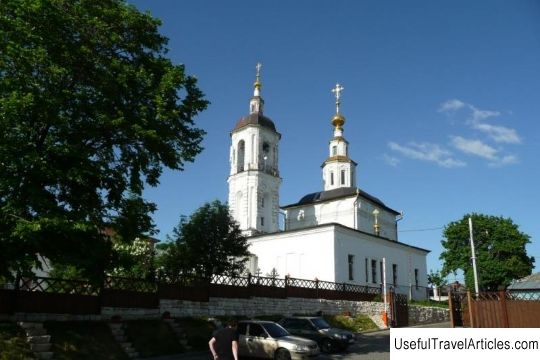
Church of the Ascension of the Lord description and photos - Russia - Golden Ring: Vladimir. Detailed information about the attraction. Description, photos and a map showing the nearest significant objects. Photo and descriptionThe Church of the Ascension of the Lord is located in Vladimir on Voznesenskaya street. In ancient times, a monastery stood on the site of the church, mentioned in 1187 and 1218 in the Laurentian Chronicle. In 1238, during the invasion of the Tatars, the monastery was destroyed. The mention of the church is found in the patriarchal books in 1628, 1652, 1682. The church was wooden until 1724, then a stone building was built, which has survived to our times. In 1813, a cold chapel was added to the church in honor of the Intercession of the Virgin. Most likely, at the same time, 2 upper bell tiers were built on, as evidenced by the similarity of the decorative solution of these two volumes. The church has a second warm chapel in the name of the Annunciation. The nature of the stylistic features indicates that that the southern side-altar was built later than the northern one. The Ascension Church is located in the southern part of the city in the middle of urban development dating back to the late 19th - first quarter of the 20th centuries. Shchedrin street leads from the city center to the temple, smoothly going down. From the side of the central part of the city, the church is therefore not visible; a view of it opens from Shchedrin Street, which approaches the building of the temple from the north. A deep ravine is located to the west of the temple. From the east, the temple again bends around Shchedrin street, from which, both on the east and on the west, there is an active lowering of the relief, which turns into a deep ravine. Shchedrin Street also runs on the south side of the temple. The best point for viewing the temple is the floodplain of the Klyazma River. Today, the Ascension Church includes a building of the original construction, consisting, in turn, of the main volume, a vestibule with a porch, a small refectory, a bell tower and two aisles from the north and south. Together, these volumes create a fairly compact composition. In the composition of the ancient part of the temple, the quadruple of the main volume is especially prominent, which has a four-slope covering along the bent arch. The original building in the plan is a rectangle elongated from west to east. A single-part apse adjoins the main volume from the east. It represents smoothly expressed semicircles smoothly merging into each other, separated from each other by shoulder blades. In the western part, two side chapels are connected to the refectory. The main volume is a one-piece, single-column, columnless quad with two flat ceilings. The constructive solution of the arch of the main volume is peculiar - at the level of the heels of the arch, stripping is arranged in each face. They are located in three on each side, their shapes vary from smoothly rounded to acute-angled. A painting has been preserved on the vault above the second ceiling. The vault is completed with an octagonal light drum. The room of the apse is high and spacious, covered with a corrugated vault and blades; above the middle window and above the entrances, it has strikings. The floor in the building of the temple is wooden. On the vault and on the walls, a plaster base for painting has been preserved. Three arches connect the main volume with the apse. The arched passages also connect the refectory to the side-chapels. The low rectangular volume of the refectory covers the late flat vault. The side-altars and the apse are of the same height, but the apse has a higher roof. The north side-altar in the plan is a rectangle elongated from east to west, which ends in a semicircular apse in the east. It is a low-rise building with a pitched roof. On the facade of the north side-chapel, the apse and the western part are highlighted with decor. The side entrance to the north aisle is decorated with an Empire portico with a triangular pediment with double columns in the corners. A later annex is adjoined to the north aisle from the west, fenced off by a wall from the aisle. The south aisle - wider and more spacious - is a rectangular building that stretches from east to west and adjoins the old vestibule. Now the southern wall of this vestibule is absent, and so the old vestibule is united with the southern aisle. From the northwest, a slender, high, three-tiered bell tower adjoins the refectory, which ends with a faceted drum with a head. The first tier of the bell tower is a well-defined quadrangle, which has survived from the base of the old bell tower. The next two tiers have cut corners. The bell tower has large bell spans, which have different widths, which are much narrower on the northern and southern edges. The Ascension Church, as a whole, is a typical example of the posad pillarless church, which is characteristic of the late 17th - early 18th centuries , and common in the Vladimir region.        We also recommend reading Lima Art Museum (Museo de Arte de Lima) description and photos - Peru: Lima Topic: Church of the Ascension of the Lord description and photos - Russia - Golden Ring: Vladimir. |
